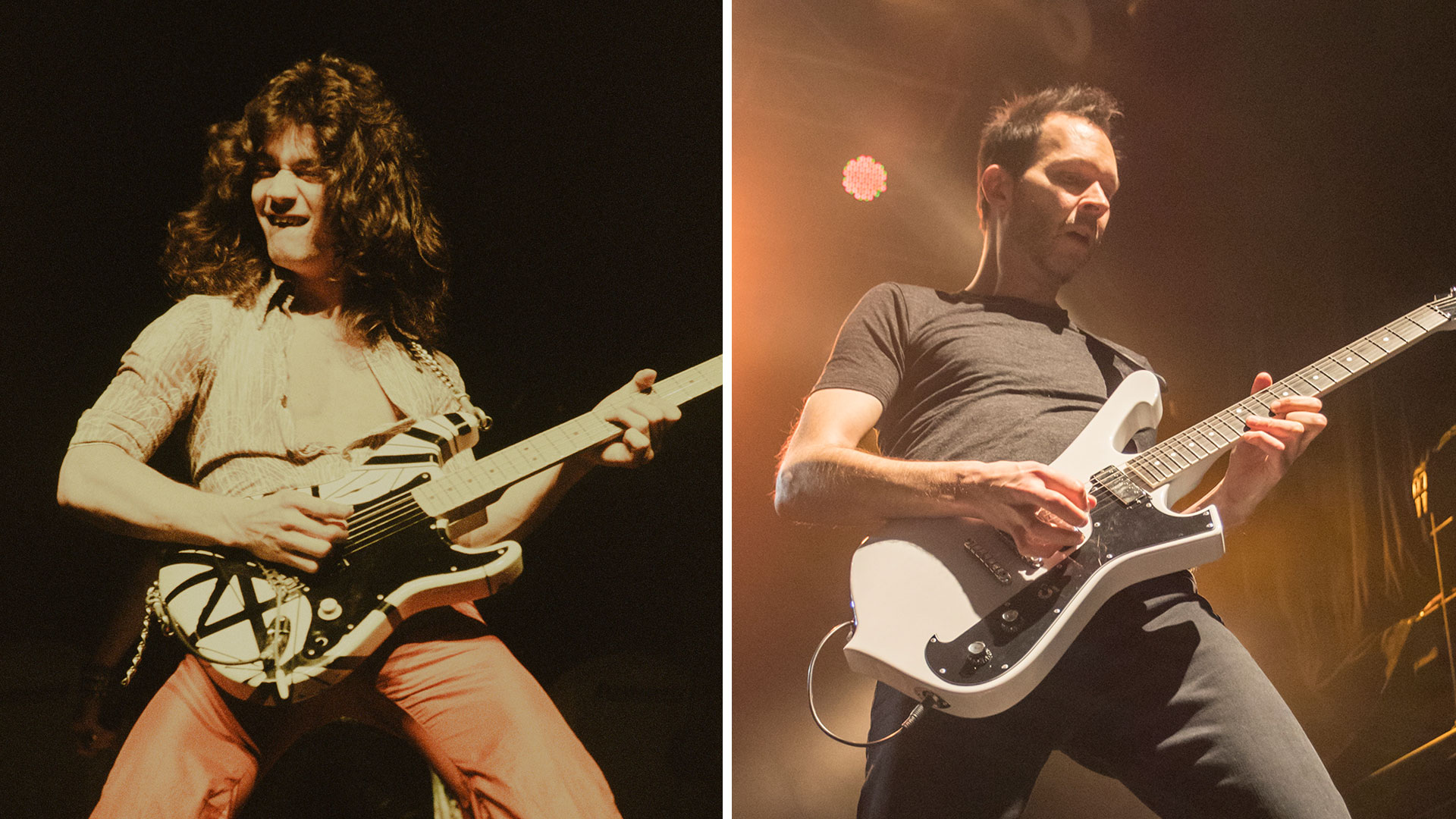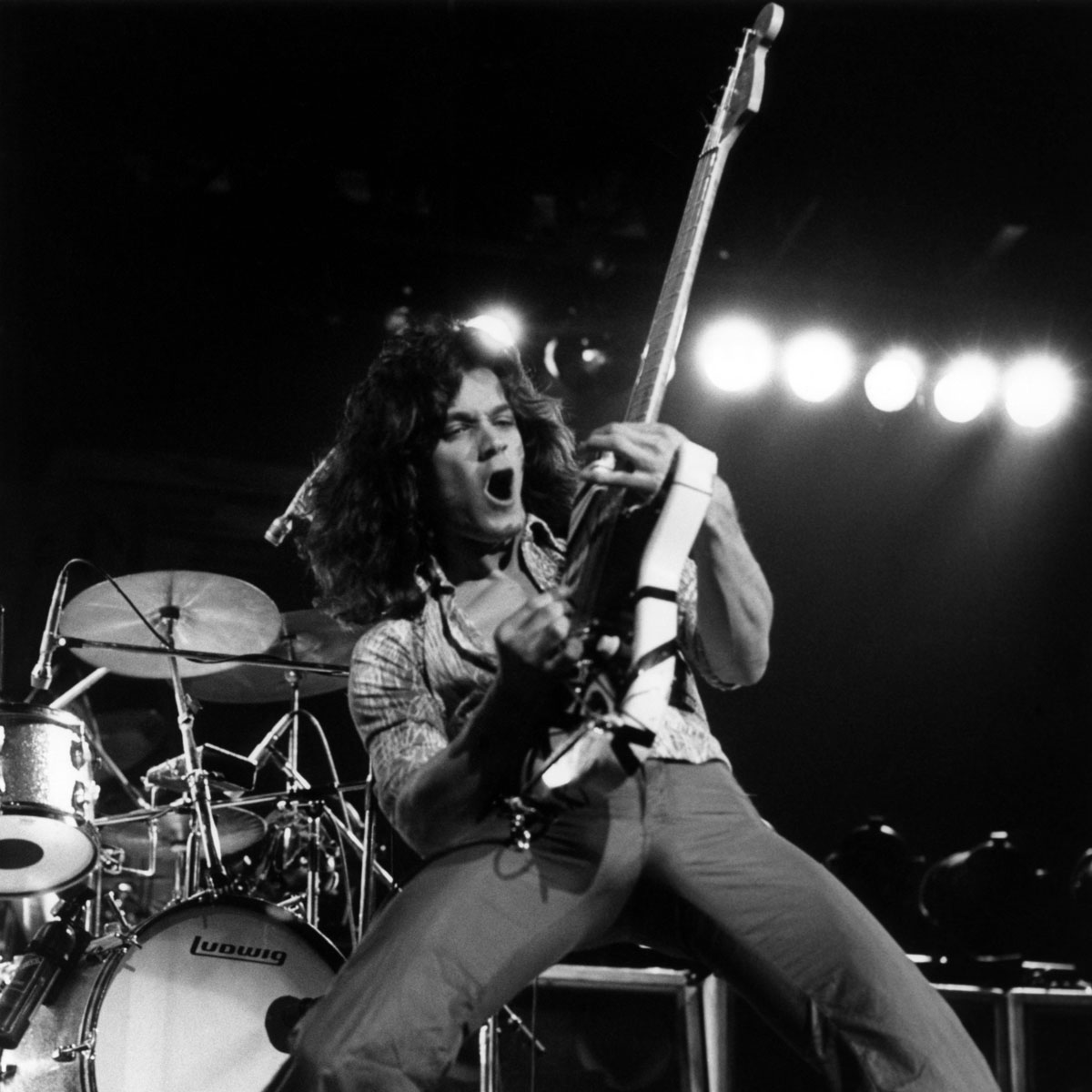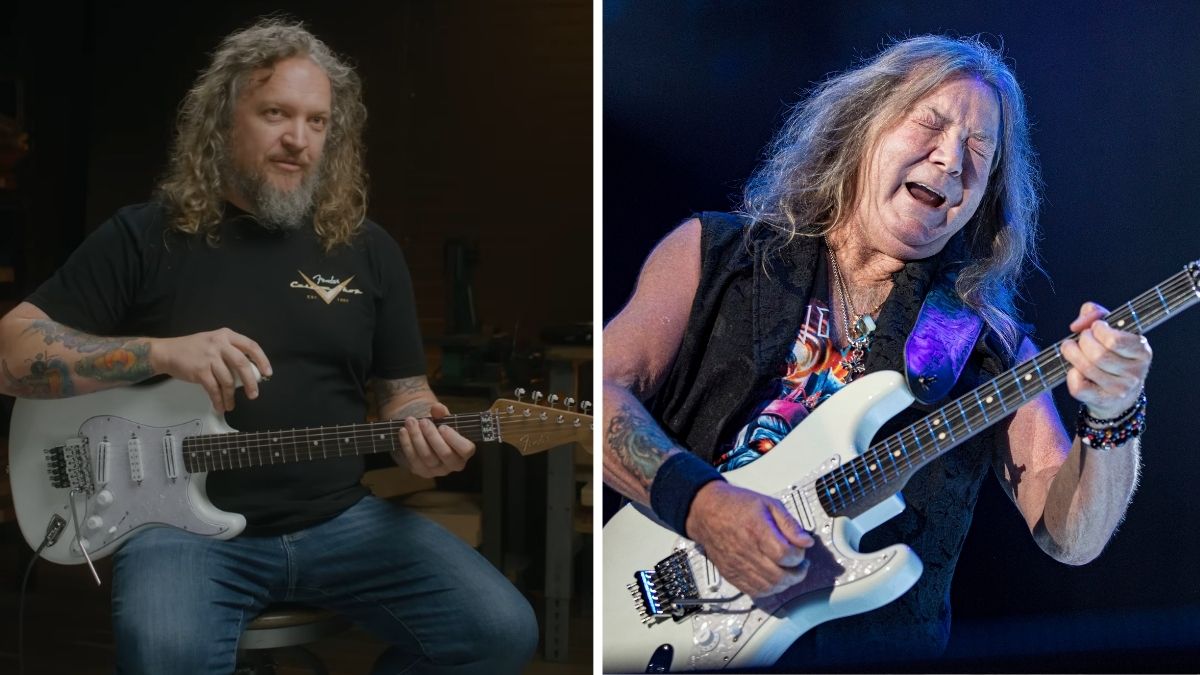“Eddie was like a new sun appearing in the sky. You could sense that the world would never be the same”: From the big bang of Eruption to tone tips and warm-ups – Paul Gilbert shares the knowledge gleaned from a lifetime studying Eddie Van Halen
The shred icon salutes his greatest influence – with the insight of a fellow guitar obsessive

After Edward Van Halen stunned the world with his fretboard pyrotechnics in the late ’70s, a new breed of technical guitarists rose up in the mid-’80s.
One such player was Racer X/Mr. Big axeman Paul Gilbert, who is still considered one of the most advanced alternate pickers and most musical shredders to this day – using rapid-fire blues lines in tandem with lightning-fast arpeggios.
Paul now recalls how his life was changed by witnessing the magic of EVH live on stage, and how this served as an education in what it takes to be a guitar great…
Eruption!
“I was lucky enough to see every Van Halen headline tour from 1979 until 1984. To be there in person was amazing. Because of technology changing and MTV coming out, the band were much better documented in terms of quality during the Sammy Hagar era.
Eddie was like a new sun appearing in the sky. You could sense that the world would never be the same
“Anyone young discovering Van Halen now will have a hard time experiencing what I did because the video quality is quite bad [see for yourself below – Ed]. You really had to be there.
“With all of the fiery things, especially Eruption, Eddie was like a new sun appearing in the sky. You could sense that the world would never be the same. So I was lucky to see them with my own eyes and take in what Eddie had to offer.
“Those were some really astounding years. I don’t often use words like spiritual or religious but it had that kind of profound effect on me. I actually still have recurring dreams about those experiences because they were so exciting.”
All the latest guitar news, interviews, lessons, reviews, deals and more, direct to your inbox!
Fluency
“I think Eddie’s talent demonstrated the benefits of being a nerd! He would practice eight hours a day and it showed. I don’t get to do that anymore at home, but when I was a teenager and wasn’t cool enough to have a girlfriend, I would spend my entire day working on my guitar playing.
“That’s how you get fluency and feel. It’s really hard to sustain, though, because as you get older it’s really hard to find eight hours in one day! I think Eddie was telling the truth in those interviews… he really was spending every hour he could with his guitar.”

Impact
“It felt like everything exploded when Eddie came out. Everyone after him took some influence. It’s actually hard to think of anyone who wasn’t influenced by him! I guess Eric Clapton didn’t change and B.B. King didn’t start tapping, so the older generation managed to not be too affected by it. Anyone who was a little more current, however, learned a lot from Eddie.
“You can hear it in how Joe Satriani was tapping and, of course, Steve Vai. I think Vito Bratta from White Lion got a lot of his feel from Eddie. I was like that, too – in fact when I was putting together Racer X, Mike Varney from Shrapnel Records was our producer and he was concerned we sounded too much like Van Halen with just me and suggested we get another guitarist in the band.”
Tapping
“After the first Van Halen album, you started to notice the gain knobs getting turned up to 11… yeah, just like Nigel Tufnel! That became the standard. Eddie did the Beat It solo for Michael Jackson and after that you started hearing Van Halen-style solos in all kinds of music.
“You might listen to funk and soul songs that would suddenly have this rock guitar solo instead of saxophone or keyboard. And tapping quite often has a keyboard-ish feel to it. In fact, when Eruption came out, a lot of people were wondering if they were hearing keyboards!”

Feel
“It’s so easy to fall into the whole ‘he invented tapping’ thing. I think, ‘Well, that’s nice, but his genius was truly across the board!’ You could have him play anything, even a Chuck Berry riff, but it wouldn’t sound like Chuck Berry. It would have this elevated feel to it.
His riffs affected me just as much as the big solos... He could play a power chord and there would be something about it
“When I started hearing Eddie on the radio, the DJ wouldn’t have to say, ‘This is Van Halen’ for me to figure it out. I remember hearing two notes of (Oh) Pretty Woman, with no tapping whatsoever, and knew it was him straight away. That’s what we should be aiming for, having an instantly recognisable tone and feel.
“His riffs affected me just as much as the big solos. It wasn’t like, ‘Oh, Eddie’s gone back to the rhythms now and isn’t using his superpowers!’ He could play a power chord and there would be something about it.
“The rhythms were not particularly easy. But he was so accomplished he’d make things that weren’t practical sound seamless and feel good. As a teacher, I often say to my students, ‘You’ve got the notes, you’ve got the rhythm but we’ve got to sort out the feel – that’s where the magic is!’”
Control
“When you have that much distortion and volume, your guitar really becomes a fire-breathing beast that needs to be harnessed. Issues arise because you will play one note and the other five strings will be howling unintentionally and creating feedback, making your world full of danger!
Eddie’s ability to mute and control the noise was a huge part of his technique
“Eddie’s ability to mute and control the noise was a huge part of his technique. You don’t notice it because it’s the silence he was creating. You would only hear what he wanted you to hear. And if you were to pick up a guitar and try it yourself, your guitar would start screaming uncontrollably like a monster!
“I learned all of this stuff from rehearsing with a band in a small room at stadium volume and I suspect Eddie did it that way too, especially with a drummer brother because he had to turn up to compete in volume and that would have been a dangerous instrument to tame.
“A lot of bedroom players never learn that, so it’s another thing I focus on when teaching. You have to get the unplayed strings under control and listen out for all the extra noise. Eddie had a supremely good ear. He could instinctively control it all with his hands.”
Picking
“There’s a picking exercise I learned from a 1979 live bootleg of the song I’m the One. Eddie was, of course, tuned down a half-step, but in regular tuning it would be the notes B, C and D on the fourth, fifth and seventh frets of the G-string.
“The second time round, he’d swap the last note for an A on the seventh fret of D-string. The trick is to start on an upstroke. I worked on that lick for a whole summer, going across the other strings.
“Eddie would start slow and speed it up. It’s one of the best picking exercises I’ve found and one I always recommend to my students, direct from Eddie! And I think he might have gotten it from the end of Fairies Wear Boots by Black Sabbath.
“So it could very well be a Tony Iommi lick sped up by Eddie, making it way better than the one I’m known for, which I stole from Al Di Meola!”
- Paul Gilbert’s The Dio Album is out now.
Amit has been writing for titles like Total Guitar, MusicRadar and Guitar World for over a decade and counts Richie Kotzen, Guthrie Govan and Jeff Beck among his primary influences as a guitar player. He's worked for magazines like Kerrang!, Metal Hammer, Classic Rock, Prog, Record Collector, Planet Rock, Rhythm and Bass Player, as well as newspapers like Metro and The Independent, interviewing everyone from Ozzy Osbourne and Lemmy to Slash and Jimmy Page, and once even traded solos with a member of Slayer on a track released internationally. As a session guitarist, he's played alongside members of Judas Priest and Uriah Heep in London ensemble Metalworks, as well as handled lead guitars for legends like Glen Matlock (Sex Pistols, The Faces) and Stu Hamm (Steve Vai, Joe Satriani, G3).

